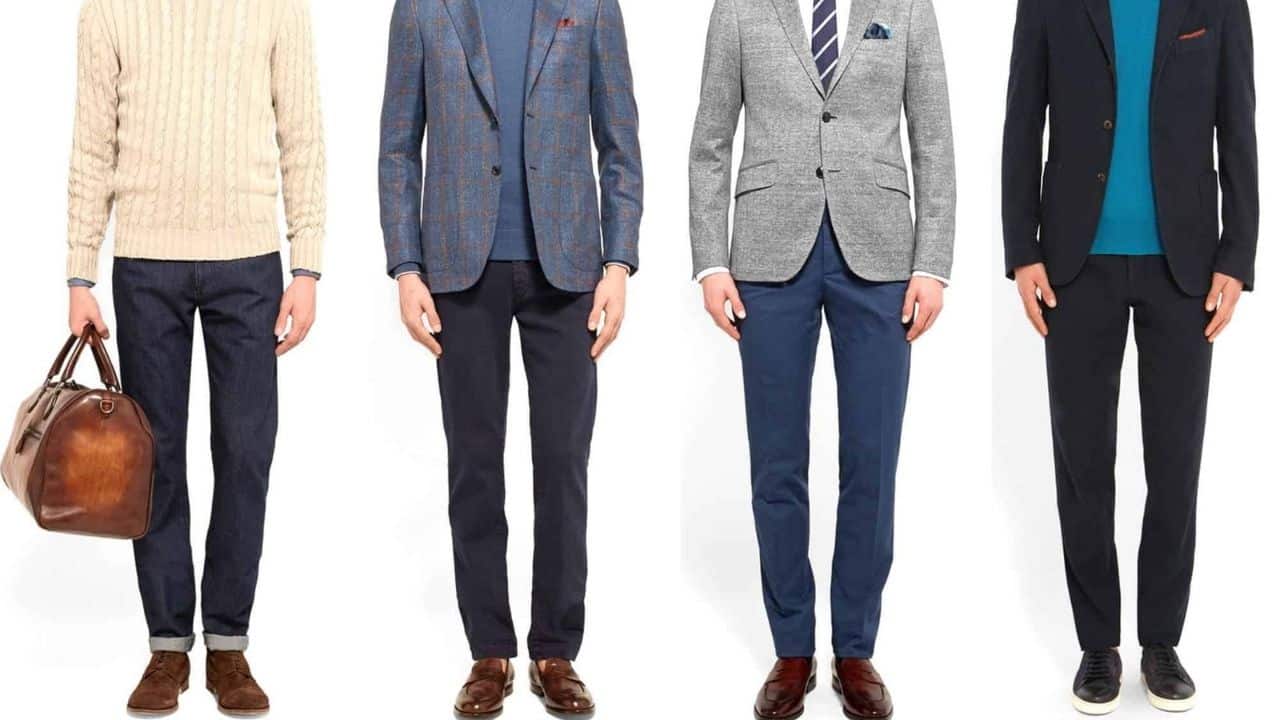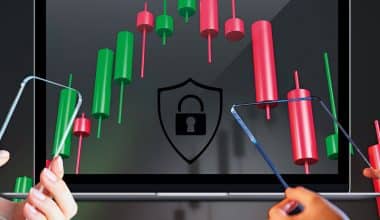Different companies, businesses, and industries have their own definition of business casual clothing. And knowing which attire fits into this category can be very challenging.
You need to keep in mind that what you were for casual friends hangout, beach, or even yoga does not classify as business casual clothing in a work environment.
So, when in doubt, it is better to fault on the side of overdressing – dressing too formal than underdressing – too casually.
But how do you even know which is which? Find out all about business casual clothing for men and women, business casual dress code policy, alongside tips on what to wear and what not to wear in this article.
Let’s get started!
What Is Business Casual Clothing?
Business casual clothing is a code of dressing that combines regular business attire with a more relaxed style still professional and suitable for a business environment. According to Wikipedia, it is an occasional, spontaneous dress code, suited for everyday use.
Business casual attire is common in organizations such as law offices, financial institutions, customer service where clients visit the office. It includes cool and neat pressed shirts together with a jacket, sweater, or vest.
While choosing which business casual attire to wear, keep in mind that it doesn’t mean wearing your regular flip flops, beachwear, tight or baggy clothing. It means clothing that is unwrinkled, seams are properly done, relaxing shirts and trousers.
In fact, because its the norm for many offices, you don’t have to get a whole new work wardrobe. You don’t even need to wear a suit as it may look so formal. Just combine your regular neatly pressed trousers and shirts with good shoes. And you’re good to go.
To help you understand the concept of business casual clothing, I’ve explained what dresses you can wear below.
KNOW THE BEST LAUNDRY PRODUCTS: List Of Best Laundry Products
Is Polo or Jeans Business Casual?
When the dress code is business casual, it is not right to wear your favorite polo. However, you can wear your jeans, properly combined with a well-pressed shirt. Remember the “business” part in business casual and in as much as it also says casual, don’t bring in your ripped jeans, flip flops, or old t-shirt.
Leave your old comfortable clothes at home and come to “business” with the neatly pressed and clean clothes that fit properly.
Business Casual Clothing for Men
For Men, appropriate business casual clothing involves chinos, a button-down shirt, dark socks, and dress shoes. This outfit reveals a professional image and at the same time, displays a relaxed and cool vibe without looking like your everyday home wear.
Also, you don’t have to wear business suits as an employee to be properly dressed for a business. If you don’t know what the dress code for the place is, just ask.
Here is a guideline for you.
- Top: neutral-colored button-down shirts with either short-sleeves or long-sleeves, shirts with a collar, button-up shirts, sweaters in a mix of patterns and colors.
- Bottom: Semi-formal pants, chinos, dark or blue jeans with a belt.
- Shoes: dark leather shoes, loafers, tie-up shoes
- Don’t wear: ripped jeans, printed shirts, denim, sandals, flip flops, sportswear, boat shoes, beachwear, tennis shoes, T-shirts, polo, or hood sweatshirts.
Business Casual Clothing for Women
There is a wide variety of business casual clothing for women, from nice jeans to blouses and sweaters. For colors, choose neutral colors such as black, grey, brown, white. Opt for small pieces of colors instead of the same color for an entire outfit.
Other appropriate business casual outfits for women include skirts, dress slacks, twinset, closed-toe shoes, and jacket (optional).
In addition, a well-fitted blouse worn with pants and a stylish black, brown, or blue shoe is a worthy example of business casual clothing for women. It makes you look, simple, and professional.
If you’re unsure, consider the following:
- Top: turtle necks, dressy tops, neutral or solid colored sheath dress, casual dresses, blouses, dressy tops, vests, sleeveless shirts.
- Bottom: Pencil-cut skirts, knee-length skirts, dress pants (khaki, cotton, or twill)
- Shoes: Flats, Pumps, Stilettos, Closed kitten, Open-toed heels.
- Don’t wear: Deep neckline, Sandals, Peep-shoes, eye-catchy shoes, flip-flops, crop tops, leggings, bright colors, leggings, off-the-shoulder shirts or dresses, tennis shoes, and hood sweatshirts.
FIND OUT 12 Must Have Laundry Equipment to start with
Business Casual Dress Code Policy
Oftentimes, dress code policies are put in place to organize the employees dress culture and maintain orderliness in the work environment. Though employees prefer to dress more casually.
Below is an example of a business casual dress code policy in a workplace from Balance careers
Company XYZ expects employees to dress appropriately in business casual attire. Because our work environment serves customers, professional business casual attire is essential. Customers make decisions about the quality of our products and services based on their interaction with you.
Consequently, business casual attire includes suits, pants, jackets, shirts, skirts, and dresses that, while not formal, are appropriate for a business environment.
Examples of appropriate business attire include a polo shirt with pressed khaki pants, a sweater and a shirt with corduroy pants, a jacket with a skirt or slacks and a blouse or a sweater with a skirt or pants. Pantsuits and sports jackets also fit the business casual work environment if they are not too formal.
Jeans, t-shirts, shirts without collars and footwear such as flip-flops, sneakers, and sandals are not appropriate for business casual attire.
Employees are expected to demonstrate good judgment and professional taste. Use courtesy towards coworkers and your professional image to customers as the factors you use to assess whether you are dressing in business attire that is appropriate.
Employees who wear business attire that is deemed inappropriate in this workplace will be dealt with on an individual basis rather than subjecting all employees to a more stringent dress code for appropriate business attire.
A business code policy serves as a guideline to enable you to know what is proper and expected in your workplace. When you understand the dress code policy, it makes it easier for you to abide by them.
More Dress Code Rules to Consider
Here are more things to consider if your job requires a business casual clothing.
- If you’re new to a job, it’s better to overdress on your first day, than to underdress. Avoid dressing like you’re going for a picnic to some resort outside town.
- During job interviews, it’s always best to appear more formal. Even if your interviewer looks a lot too casual to be in that environment, it doesn’t give you permission to follow suit. Ask the HR to be certain of what type of dressing is required for the company.
- Dress based on your calendar. If you’ll go out to meet clients, dress well to respect the clients you’re going to meet. You can dress more casual when you’re going to spend the whole day in the office.
- If you’re going to dress formally from Monday to Thursday, then ensure that Friday is not left out. Regardless of if Fridays at your office are known as “casual days”. Don’t come in looking like you just had the best time of your life at a resort. In as much as it is a casual day, try to look formal in a casual way
Tips for Dressing in Business Casual Clothing
Below are a few tips to help you dress better in a business casual workplace.
1. Know your company’s dress code policy.
Every employer has their own definition of business casual attire. Some may prefer formal dressing for different occasions. So whichever one it is, check with HR to know what is applicable.
2. When deciding what to wear for an interview, overdress for it.
This allows you to make a good first impression. You feel as good as you look so dress to kill. This will help you know what other employers are wearing and what to wear next.
3. Communicate your religious or medical beliefs
If you have any religious or medical belief that will prevent you from wearing the company’s dress code, then it’s best to communicate to HR. That way you wouldn’t be penalized for violating the office dress code.
GET A WORKABLE FASHION BUSINESS PLAN IF YOU’D LIKE TO START A BUSINESS CASUAL CLOTHING LINE
4. Look out for casual Fridays
If there’s are casual Fridays, beware of what the company requires you to wear. Some companies allow their employees to dress more casually on Fridays than on other days. If so, avoid clothes with offensive images and writings as well as other unprofessional attire.
What NOT to Wear With a Business Casual Dress Code
If your company allows a business casual clothing or dress code, then here are several things you cannot wear.
- Clothing with large logos or texts
- Shorts or mini skirts
- Very bright colors such as neon
- Oversized, baggy, or very loose clothes
- Tight or very short clothes
- Flip-flops or sandals
- Sports shoes
- Mismatched clothes
- Low-cut tops or backless tops
- Plunging neckline tops
- Strapless shirts unless paired with a jacket or blazer
- Ripped jeans
- Dresses that reveal bra straps.
What to Wear When There’s No Business Casual Dress Code
If you work for a company that has no formal dress code, then it’s good to find out what is acceptable in the work environment. It could be very formal clothes or business casual clothing. Whichever one it is, it’s always best to appear well-groomed, with neat and well-pressed clothes.
After all, you feel as good as you look. So, here’s what to wear in a workplace that has no dress code policy
1. Wear what you feel confident in.
A modern office without a dress code gives you the freedom to wear clothes that suit you while still being appropriate for the work environment. Take a look around the office and see what fellow employees are wearing.
You’ll notice that their styles are different but have one thing in common – they’re suitable for the work environment. If there was an urgent presentation to be made, no one will be bothered about how they look.
So, ensure that your attire is office-is ready and you feel confident in it.
2. Wear nice shoes
Since there is no dress code, consider wearing nice shoes instead of dress shoes. This is because dress shoes may seem too formal for the workplace. If you are unsure about which shoes to wear, just ask.
The who idea is to wear very neat and clean shoes.
3. Use the prints and colors wisely
In a work place with no dress code, you would want to minimize how you use prints, and combine lots of colors.
However, once in a while, you can switch things up. Instead of your regular khaki or plain-colored pants, you can opt for a floral print or pattern.
Additionally, instead of your regular black or brown colored attire, you can go for a subtle color like blue, grey, or salmon color.
LEARN WHAT A Laundry service Business: [6 success keys +business plan] IS ALL ABOUT
4. Combine accessories
If you are not comfortable with the regular office casual attire, but still want to fit into the company’s culture regardless of if there’s a dress code policy or not, you can still combine accessories and look professional.
Wear a scarf, add a necklace or a pair of earrings, wear a bracelet if you can. There are a lot of ways to refine your casual look without being out of line.
5. Remember First Impressions
If you’re going for an interview, and the company has no dress code, the rule is to dress up. I’m going to hammer this as many times as I can. You’d want to make a proper first impression, and maybe even be misplaced for the manager because you look really good.
Bear in mind that first impressions are still first impressions. So you need to go the extra mile to make sure that you make a good first impression.
What Is Business Casual Dress Code?
Business casual is essentially a dress code that calls for wearing formal business attire with a few laid-back additions here and there.
Can I Wear Sneakers for Business Casual?
In a business casual setting, the conventional lace-up shoe can look terrific. Due to the more informal appearance of lace-up sneakers compared to slip-ons, a neutral color and leather material will assist create a polished appearance appropriate for the workplace.
Are Skinny Pants Business Casual?
A business casual environment is typically considered to call for darker jeans in a classic style or cut. Avoid wearing trendy jeans to work, including those that are acid-washed, shredded, faded (with genuine or faux distress marks), or embellished with glitter or rhinestones.
What Colors Can You Wear for Business Casual?
Wear pants that are dark in color, such as blue or green, or those are black, brown, grey, or khaki. Don’t wear pants that are brightly colored, like red, yellow, or purple. not wearing white or wearing camouflage
Does Shirt Have to Be Tucked In for Business Casual?
If you’re wearing a casual shirt by itself, leave it untucked; for smarter casual events, tuck it in while wearing a shirt with a jacket or coat.
How Do You Dress Professionally Casual?
Slacks or khakis, a dress or skirt that is knee-length or shorter, a tailored blazer, a knit shirt or sweater, and loafers or dress shoes that cover all or most of the foot are typical components of appropriate business casual attire. Other items to consider include an optional tie or seasonal sport coat.
Conclusion
Business casual clothing varies from industry to industry. So, whatever office you find yourself in, be sure to find out what casual attire is acceptable in the firm and stick to it.
Once you have that figured out, you can either spice things up using accessories, or reduce it a bit so your attire isn’t all over the place and it seems appropriate.
So, we recommend that you apply these guidelines as they’ll keep you on track. You can let me know if this helped you in the comment box below.
Good luck!








